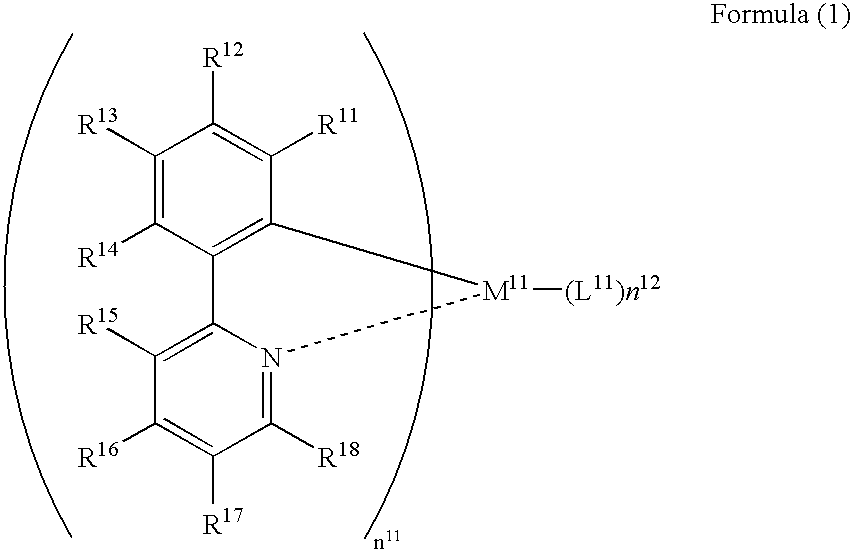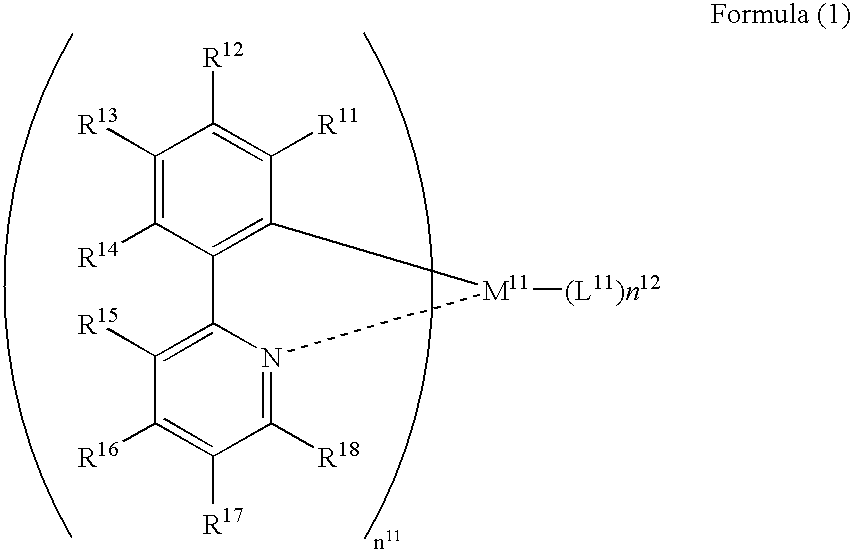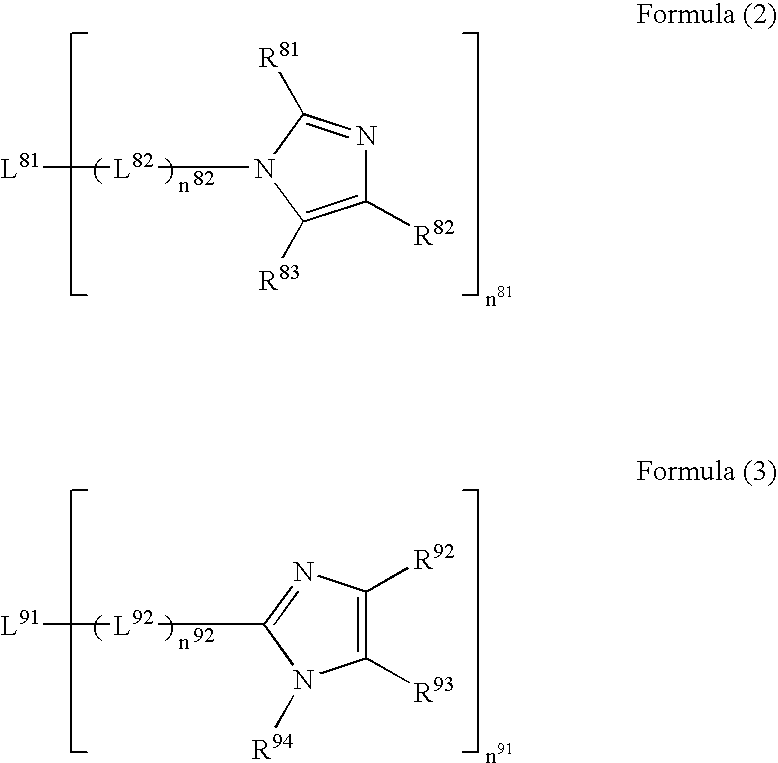Organic electroluminescent device
an electroluminescent device and organic technology, applied in the direction of discharge tube luminescnet screens, other domestic articles, natural mineral layered products, etc., can solve the problems of slow response of light emission, low efficiency of the device described therein, and low durability, and achieve the effect of high light-emitting efficiency
- Summary
- Abstract
- Description
- Claims
- Application Information
AI Technical Summary
Benefits of technology
Problems solved by technology
Method used
Image
Examples
example 1
[0119] A cleaned ITO substrate was set in a vacuum deposition apparatus. N,N′-diphenyl-N,N′-di(m-tolyl)benzidine (TPD) was deposited on the substrate to a thickness of 50 nm to form a hole-transporting layer. Then, a compound A (host material, T1=65 kcal / mol) represented by the following chemical formula and a compound D (fluorescent light-emitting compound) represented by the following chemical formula were deposited thereon in a ratio of 99:1 (mass ratio) to a deposition thickness of 1 nm. Compound A and the compound (1-2) (the phosphorescent maximum wavelength of a solution system was 470 nm at 20° C.) as the amplifying agent were deposited thereon in a ratio of 17:1 (mass ratio) to a deposition thickness of 1 nm. This process was repeated 18 times, and a thin film (light-emitting layer) of 36 nm in total was formed. In this case, a crucible in which compound A and compound D had been poured and a crucible in which compound A and compound (1-2) had been poured were heated to temp...
example 2
[0122] In the places of compound A and the compound (1-2) used in Example 1, compound C (host material, T1=67 kcal / mol) represented by the following chemical formula and compound (1-3) (the phosphorescent maximum wavelength of a solution system was 466 nm (20° C.)) were respectively used. Otherwise, a device was fabricated and tested in the same manner as in Example 1. As a result, blue light emission having a maximum light-emitting wavelength of 500 nm or less was obtained, and the external quantum efficiency at 200 cd / m2 was 3.3%.
example 3
[0123] In the places of compound A and compound (1-2) used in Example 1, compound C and compound (1-4) (the phosphorescent maximum wavelength of a solution system was 459 nm (20° C.)) were respectively used. Otherwise, a device was fabricated and tested in the same manner as in Example 1. As a result, blue light emission having a maximum light-emitting wavelength of 500 nm or less was obtained, and the external quantum efficiency at 200 cd / m2 was 3.6%.
PUM
| Property | Measurement | Unit |
|---|---|---|
| phosphorescent light-emitting maximum wavelength | aaaaa | aaaaa |
| light-emitting maximum wavelength | aaaaa | aaaaa |
| light extraction efficiency | aaaaa | aaaaa |
Abstract
Description
Claims
Application Information
 Login to View More
Login to View More - R&D
- Intellectual Property
- Life Sciences
- Materials
- Tech Scout
- Unparalleled Data Quality
- Higher Quality Content
- 60% Fewer Hallucinations
Browse by: Latest US Patents, China's latest patents, Technical Efficacy Thesaurus, Application Domain, Technology Topic, Popular Technical Reports.
© 2025 PatSnap. All rights reserved.Legal|Privacy policy|Modern Slavery Act Transparency Statement|Sitemap|About US| Contact US: help@patsnap.com



